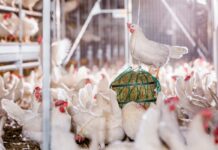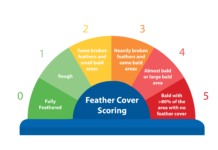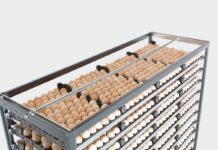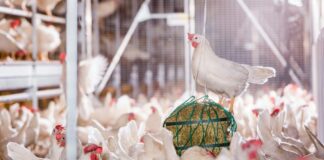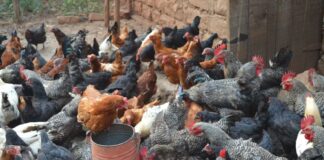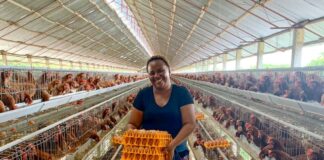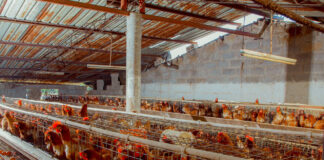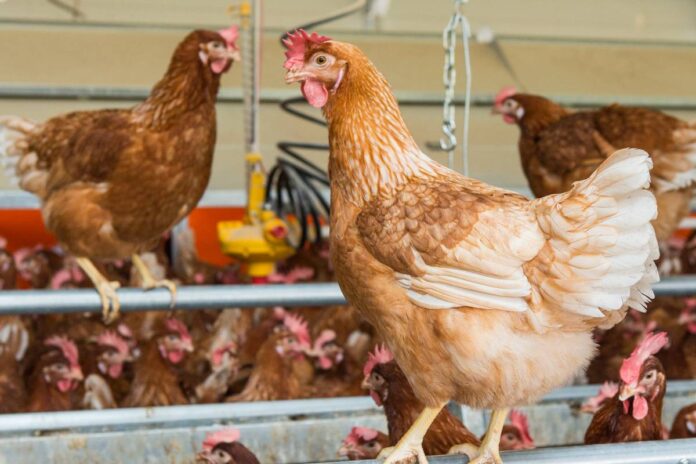
Successful egg production in table-egg laying hens relies on proper caretaking during the lay phase, yet early rearing is also paramount to achieve performance objectives.
During the first months of age, chicks and pullets develop core skills to navigate complex laying housing systems as well as proper body condition for optimal laying rate.
Need for greater resilience
Moving cage-reared chicks and pullets into multi-tier aviaries is stressful for the birds and can jeopardize production traits such as undesirable mortality during the first days, growth check or poor body weight uniformity, and elevated number of floor eggs during the peak of production. In this scenario, majority of hens spend high proportion of their time in the ground area as they are not accustomed to three-dimensional environments. Also, naïve hens are totally clueless about the location of essential resources and will take them time to figure out that water lines and feed troughs are on the top tiers. Thus, matching rearing and lay environments smoothens the brooder-to-layer housing transition as it helps chicks and pullets acquire crucial, mental and physical skills they will need later during lay.
Early rearing is a sensitive phase for skeletal development in which environmental traits play a crucial role supporting proper frame formation. For example, brooding compartments for layer chicks enriched with elevated perches, wide platforms, and long terraces positively impact their physical health and performance in the long run. Certainly, environments that allow chicks and pullets to engage in physical activities like running, jumping, and wing-flapping not only help birds cope with potential on-going stressors and enhance their wellbeing but also facilitate muscle development and bone formation. These physical activities are often referred to as bone-loading exercises due to their benefits for frame development and bone anatomy. Indeed, research in layer and broiler chicks has shown that allowing birds to perform bone-loading exercise strengthens their bones by the time of sexual maturation. This improvement in bone formation has been reported in terms of greater bone size, thickness, and density which, in return, yields higher resistance to breakage compared to bones of birds raised in small, conventional cages.
All of these translate into greater resilience against bone fractures and malformations due to weak frame and help support the high nutrient and calcium demand for egg production, particularly by the end of lay. Maintaining a laying rate close to one egg daily is definitely costly, and hens depend on calcium reserves for eggshell formation. Although calcium supplementation in layer diets aids at satisfying the high nutrient of egg laying and lowers the incidence of soft eggshells, most of the demand for calcium comes in exchange of bone strength and health. As frame weakens as table-egg laying hens age, this raises health and welfare concerns because of higher susceptibility to bone fractures and deviations. Indeed, the high prevalence and severity of keel bone fractures, lameness, or other-related disorders are also a productivity problem due to laying rate decline and greater percentage of culls. For this reason, seeking opportunities to support bone formation through rearing environments that enable the performance of bone-loading exercise can improve the performance of laying hens all the way to the end of the production cycle.
Benefits beyond enhanced physical health
The benefits of increasing rearing environment complexity go beyond promoting good physical health. Introducing chicks and young pullets to relatively-complex, rearing environments (such as elevated perches and platforms) help them nurture three-dimensional navigation skills and train their locomotory system. Although this may be trivial to grown-ups and often overlooked by farmers, chicks need to learn how to access cautiously raised resources (like mastering wing assisted flapping) and descend safely from perches and top tiers in one piece. Acquiring this agility and locomotory skills often require a step-by-step learning curve for musculoskeletal and neuromuscular development starting as soon as they hatch.
Chicks are indeed eager to explore perches, ramps, and platforms as soon as one week of age (heavier strains may take them a bit more time), and this early-life training help them learn to move around structural hazards wisely without harm. Acquiring these skills is not only valuable so pullets feel comfortable exploring their layer barn but also to prevent collisions during lay. Recent studies have indicated that pullets and hens seem to prefer using gentle (not too steep) ramps to move downwards from top tiers, and previous experience during rearing is crucial to assure proper use of resources during laying and reduce the number of falls and collisions that result in bone fractures. Even with previous learning opportunities, some birds never manage to develop these navigation or locomotory skills (like climbing steep ramps) neither as chicks nor hens. Therefore, housing design should also accommodate facilities so laying hens do not have to rely on over-exertion (e.g., flying and flapping) to access essential resources such as laying boxes, feeder troughs, and drinker lines. Indeed, high risk of collisions due to poor maneuver skills and suboptimal housing design plus high susceptibility to bone fractures because of weak frame are causal factors of physical problems and elevated culling rates in commercial laying barns.


